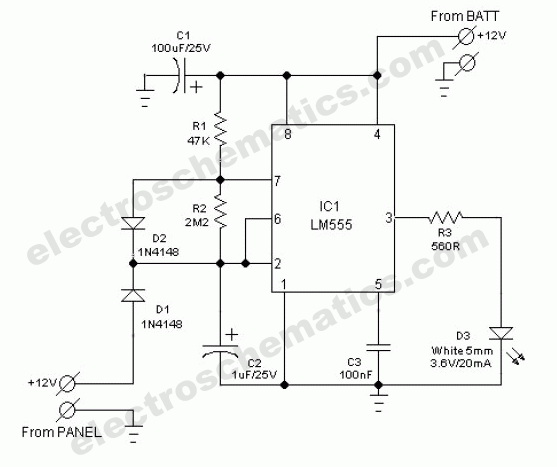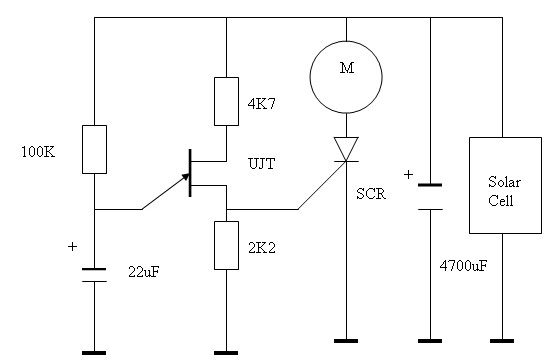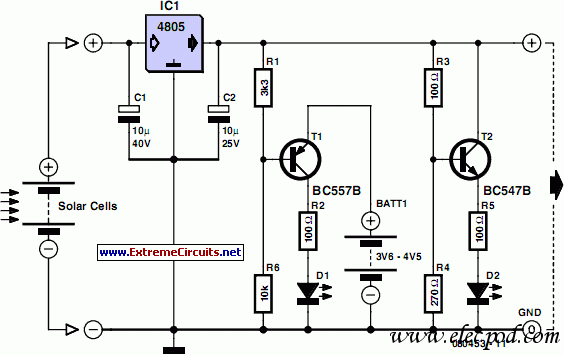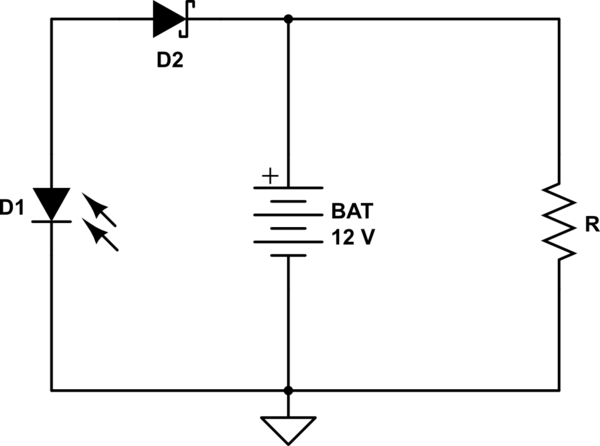
Chloroplast solar engines
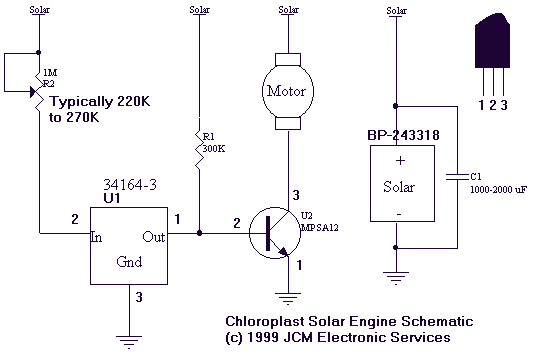
The heart of the Chloroplast is the Motorola MC34164-3 Micro power Undervoltage Sensing Circuit (U1 in the following diagram). In normal use, this component monitors the voltage at pin 2, and applies a ground at pin 1 (out) when the monitored voltage drops below 3V (34164-3 monitors 3 volts, 34164-5 monitors 5 volts). This low will then be used to assert a RESET on a microprocessor circuit. The output (an open collector) will be open when the output is above the threshold voltage. More: Through tinkering, I have discovered that placing a 220K to 270K resistor in series with the input of U1 will produce a significant hysteresis in this sensor's output. For instance, a 220K resistor as R2 will cause the output to ground until the s
The Motorola MC34164-3 is a micro power undervoltage sensing circuit designed to monitor voltage levels in various applications, such as power management systems in microprocessor circuits. The circuit operates by continuously monitoring the voltage at pin 2. When this voltage falls below the specified threshold of 3V, the circuit activates an output at pin 1, which is configured as an open collector. This output goes low, effectively grounding the pin, which can be utilized to trigger a RESET signal in connected microprocessor circuits.
The open collector output feature allows for the connection of multiple devices to a single output line, facilitating the design of more complex systems where multiple components may need to respond to the same undervoltage condition. The output remains open when the voltage is above the threshold, allowing for normal operation of the microprocessor.
To enhance the performance of the MC34164-3 and introduce a hysteresis effect, a resistor (R2) can be placed in series with the input pin. Resistor values between 220K and 270K have been found to provide significant hysteresis, which helps to stabilize the output and prevent rapid toggling during voltage fluctuations near the threshold. This is particularly useful in environments where the supply voltage may experience noise or minor dips. The hysteresis ensures that once the voltage drops below the threshold, the output will remain low until the voltage rises significantly above the threshold, thereby improving the reliability of the RESET function in the microprocessor circuit.
In summary, the MC34164-3 serves as a critical component for voltage monitoring and control, with the potential for customization through additional resistive elements to optimize circuit behavior in practical applications.The heart of the Chloroplast is the Motorola MC34164-3 Micro power Undervoltage Sensing Circuit (U1 in the following diagram). In normal use, this component monitors the voltage at pin 2, and applies a ground at pin 1 ( out ) when the monitored voltage drops below 3V (34164-3 monitors 3 volts, 34164-5 monitors 5 volts).
This low will then be used to assert a RESET on a microprocessor circuit. The output (an open collector) will be open when the output is above the threshold voltage. Through tinkering, I have discovered that placing a 220K to 270K resistor in series with the input of U1 will produce a significant hysteresis in this sensor's output. For instance, a 220K resistor as R2 will cause the output to ground until the s 🔗 External reference
The Motorola MC34164-3 is a micro power undervoltage sensing circuit designed to monitor voltage levels in various applications, such as power management systems in microprocessor circuits. The circuit operates by continuously monitoring the voltage at pin 2. When this voltage falls below the specified threshold of 3V, the circuit activates an output at pin 1, which is configured as an open collector. This output goes low, effectively grounding the pin, which can be utilized to trigger a RESET signal in connected microprocessor circuits.
The open collector output feature allows for the connection of multiple devices to a single output line, facilitating the design of more complex systems where multiple components may need to respond to the same undervoltage condition. The output remains open when the voltage is above the threshold, allowing for normal operation of the microprocessor.
To enhance the performance of the MC34164-3 and introduce a hysteresis effect, a resistor (R2) can be placed in series with the input pin. Resistor values between 220K and 270K have been found to provide significant hysteresis, which helps to stabilize the output and prevent rapid toggling during voltage fluctuations near the threshold. This is particularly useful in environments where the supply voltage may experience noise or minor dips. The hysteresis ensures that once the voltage drops below the threshold, the output will remain low until the voltage rises significantly above the threshold, thereby improving the reliability of the RESET function in the microprocessor circuit.
In summary, the MC34164-3 serves as a critical component for voltage monitoring and control, with the potential for customization through additional resistive elements to optimize circuit behavior in practical applications.The heart of the Chloroplast is the Motorola MC34164-3 Micro power Undervoltage Sensing Circuit (U1 in the following diagram). In normal use, this component monitors the voltage at pin 2, and applies a ground at pin 1 ( out ) when the monitored voltage drops below 3V (34164-3 monitors 3 volts, 34164-5 monitors 5 volts).
This low will then be used to assert a RESET on a microprocessor circuit. The output (an open collector) will be open when the output is above the threshold voltage. Through tinkering, I have discovered that placing a 220K to 270K resistor in series with the input of U1 will produce a significant hysteresis in this sensor's output. For instance, a 220K resistor as R2 will cause the output to ground until the s 🔗 External reference
